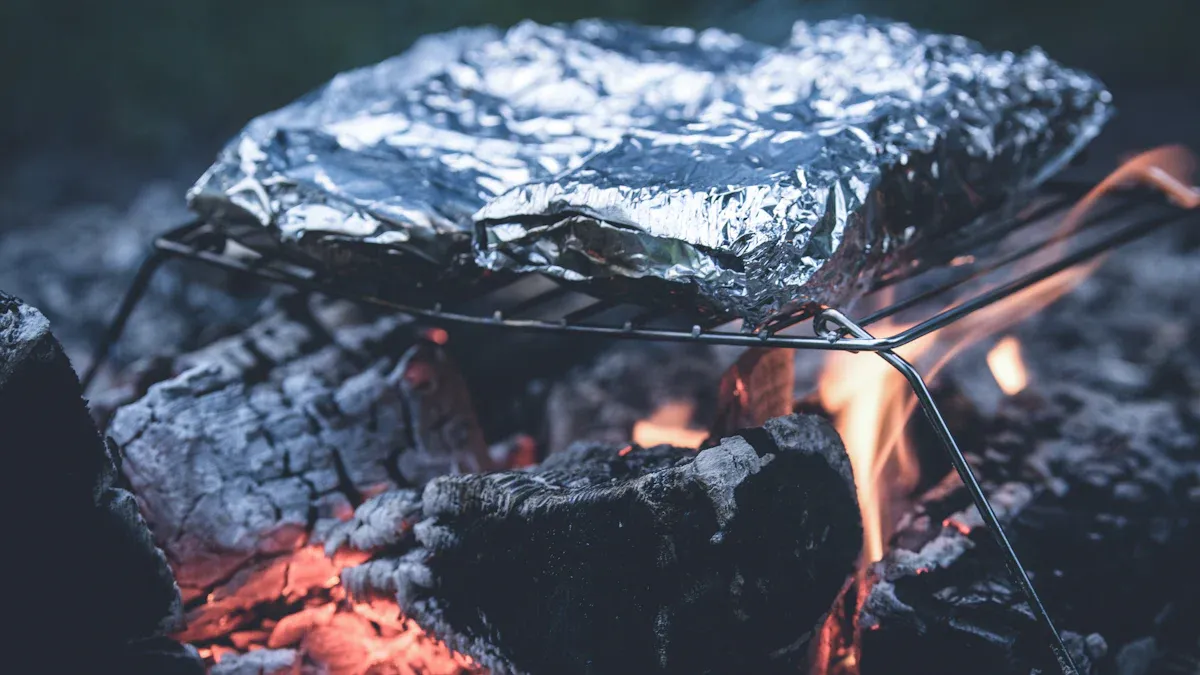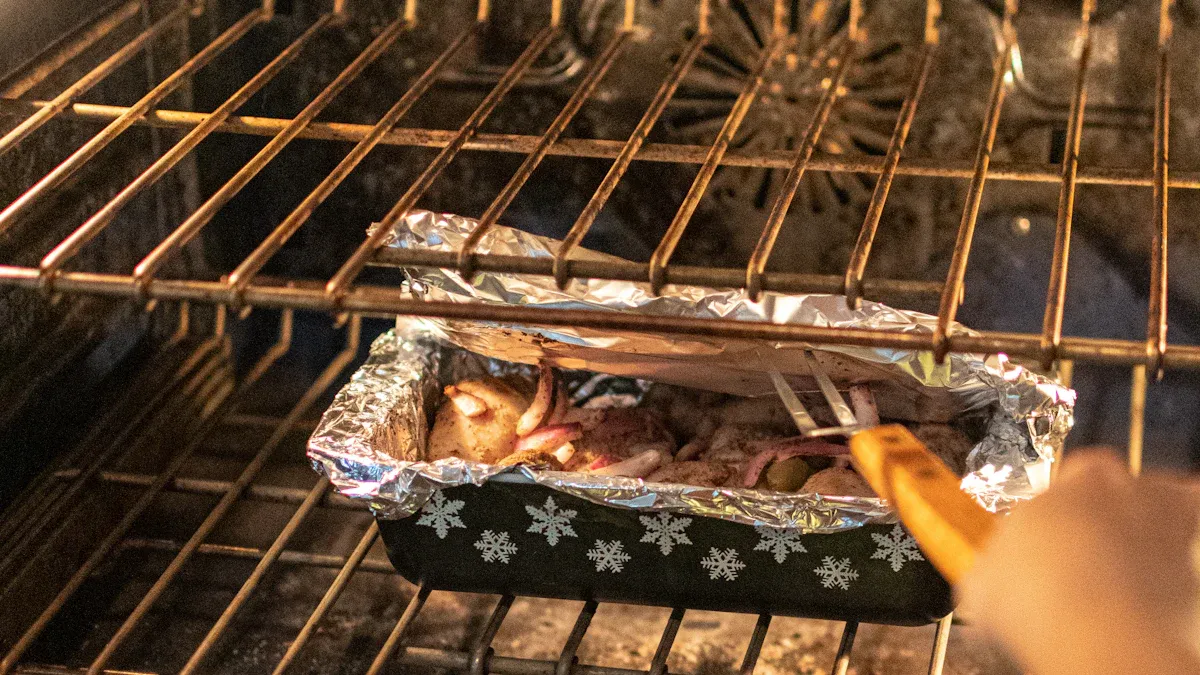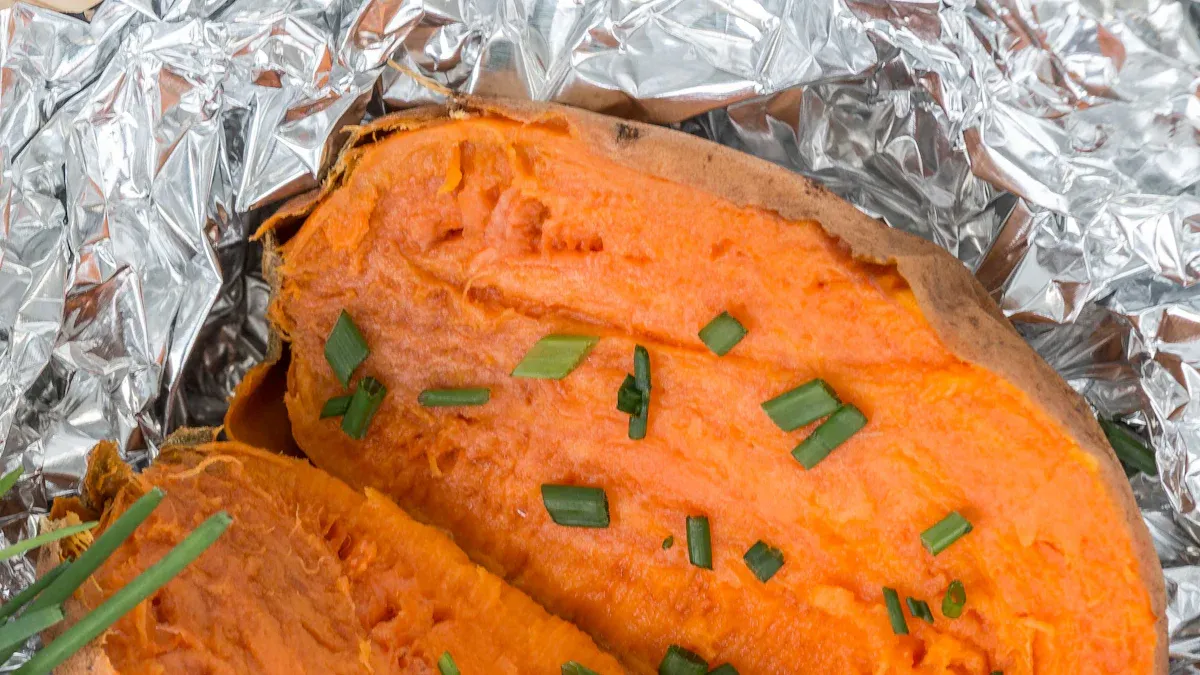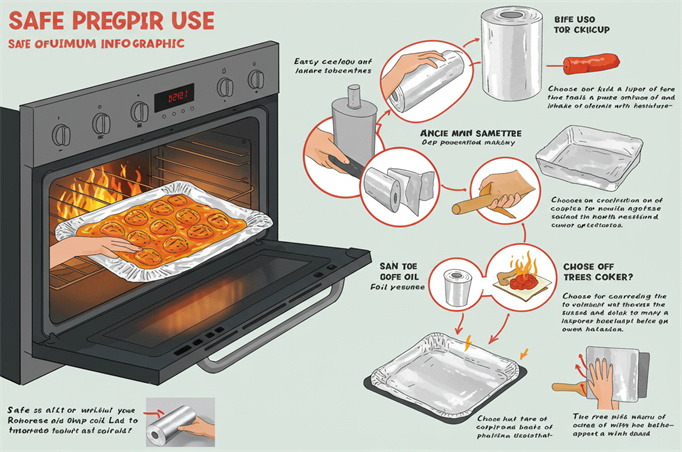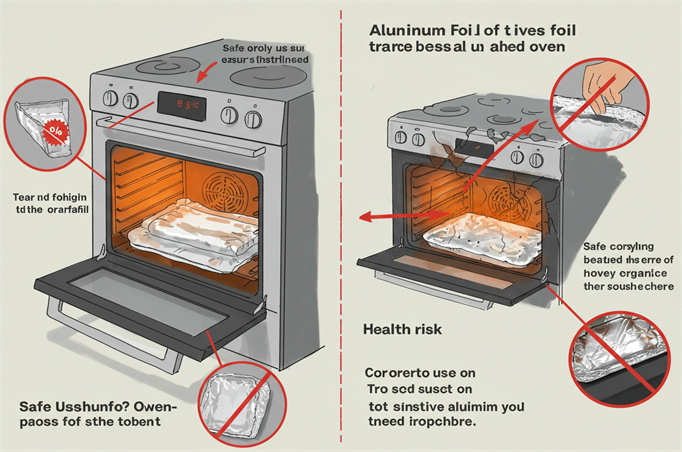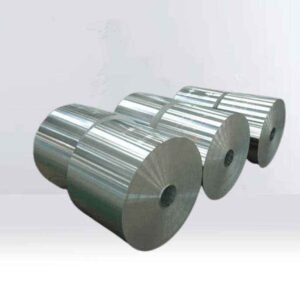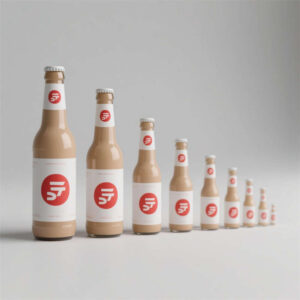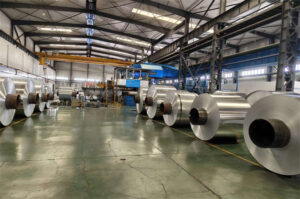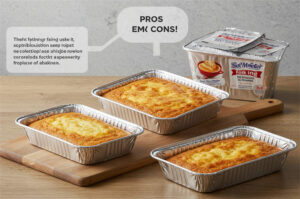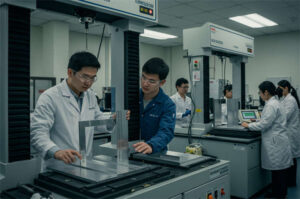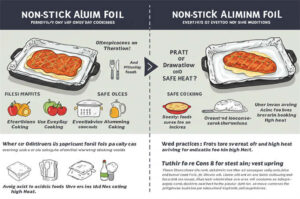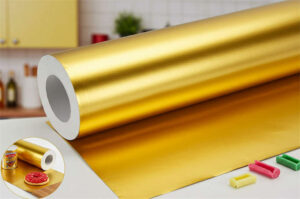You probably use aluminium foil in oven cooking all the time. Maybe you wonder, can aluminium foil go in the oven, or even, can you put tin foil in a toaster oven? People ask these questions for good reason. Oven aluminium foil makes cleanup easier and keeps food moist. Some cooks use it without a second thought. Others worry about safety. Your habits matter, so think about what works best for you.
الوجبات الرئيسية
- Aluminum foil is safe in the oven at normal baking heat if you keep it away from heating parts and do not put it on the oven bottom.
- Using foil makes cleaning up easier. It helps food cook evenly. It keeps food moist if you use it right. Do not block vents or cover whole racks with foil.
- Do not wrap acidic or salty foods right in foil. This lowers the chance of aluminum getting into your food. Use glass or stainless steel pans for these foods.
- Never block oven vents or cover heating parts with foil. This can hurt your oven, cause sparks, or make food cook unevenly.
- You can use greener options like silicone mats, parchment paper, or glass bakeware. These help keep you healthy and protect the environment.
Safety of Aluminium Foil in Oven
When you use aluminium foil in oven cooking, you probably want to know if it is truly safe. Many people ask, “Can aluminium foil go in the oven?” or even, “Can you put tin foil in a toaster oven?” These are smart questions. Let’s break down what you need to know about safety, temperature, and common myths.
Temperature Limits
You can safely use oven aluminium foil at most baking and roasting temperatures. Regular aluminum foil can handle up to 450°F (232°C) without any trouble. Heavy-duty foil works well above 400°F (204°C) and is less likely to warp or tear. Most ovens never reach the melting point of aluminum foil, which is about 1,220°F. So, you do not need to worry about foil melting during normal cooking.
Tip: Always keep foil at least 6 inches below the broiler. This helps prevent scorching or burning.
Here are some quick guidelines for temperature safety:
- Do not use foil on stovetops or grills unless you have a heat diffuser.
- Avoid using foil with acidic foods at high heat.
- For broiling, keep foil away from direct flames.
If you wonder, “Can you put tin foil in a toaster oven?” check the toaster oven’s manual first. Some models warn against it because foil can touch heating elements and cause sparks.
Risks of Oven Damage
Using aluminium foil in oven cooking can cause problems if you do not follow best practices. Lining the oven bottom with foil seems like a good way to catch drips, but it can actually damage your oven. Foil can block vents and disrupt airflow. This leads to uneven cooking and can make your oven work harder, using more energy.
- Blocking vents with foil causes hot spots and may damage oven parts.
- If foil touches heating elements, it can spark, melt, or even start a fire.
- Covering racks with foil traps heat, which can burn food or harm the oven’s enamel surface.
- In convection ovens, foil near fans or vents can catch fire or cause overheating.
ملاحظة: Appliance makers and food safety experts say you should never line the oven bottom with foil. It can fuse to the surface and create a cleaning nightmare.
If you use oven aluminium foil, keep it flat and away from heating elements. Do not cover entire racks or block vents. This keeps your oven safe and your food cooking evenly.
Myths vs. Facts
You might hear a lot of stories about aluminium foil in oven use. Let’s clear up some of the most common myths:
| Myth | Fact | Explanation |
|---|---|---|
| Aluminum foil causes harmful chemicals to leach into food. | False | Foil forms a stable oxide layer. Studies show only tiny amounts of aluminum transfer, well below safety limits. |
| Foil containers are unsafe for ovens or freezers. | False | They are made to handle high and low temperatures without melting or warping. |
| The shiny side cooks food better. | False | Both sides work the same. The difference is just from manufacturing. |
| Aluminum foil is toxic. | False | FDA and WHO say it is safe for cooking and food storage. |
| Aluminum foil causes Alzheimer’s disease. | False | No scientific proof links normal foil use to Alzheimer’s. |
Most experts agree that aluminium foil in oven use is safe when you use it the right way. You should avoid wrapping acidic foods like tomatoes or citrus in foil at high heat. This can cause a small amount of aluminum to transfer to your food, but it is still far below what health agencies consider dangerous. If you have kidney problems or want to be extra careful, use glass or stainless steel for acidic dishes.
Remember: Always follow your oven’s manual and use foil as directed. If you want to reduce your aluminum exposure, limit foil use with acidic foods and avoid reusing foil.
So, can aluminium foil go in the oven? Yes, it can—just use it wisely and avoid common mistakes. This way, you get the benefits without the risks.
Benefits
Easy Cleanup
You probably love finishing a meal without facing a pile of dirty pans. Aluminium foil in oven cooking makes cleanup a breeze. You can line baking sheets or pans with foil, so food doesn’t stick and mess stays on the foil. Non-stick foil works even better, so you don’t need extra sprays or oils. After cooking, just lift the foil and toss it—no scrubbing needed.
- Disposable aluminum pans and trays mean you skip washing up.
- Foil is lightweight and easy to use for parties or catering.
- Lining pans with foil saves time and effort compared to reusable bakeware.
Tip: Don’t cover the entire baking sheet with foil. Leave space for air to circulate and food to cook evenly.
Even Cooking
Have you ever wondered why some foods cook unevenly? Oven aluminium foil helps solve this problem. Aluminum foil pans conduct heat better than stainless steel or ceramic. This means your food cooks more evenly, whether you’re roasting chicken or baking cookies.
- Heavy-duty foil pans hold their shape and distribute heat well.
- Culinary experts say aluminum foil pans give you crisp skin and tender meat.
- Scientific studies show aluminum foil pans cook food more uniformly than other materials.
If you ask, “Can aluminium foil go in the oven for even cooking?” The answer is yes. Just make sure you use it properly and avoid blocking airflow.
Moisture Retention
Nobody likes dry chicken or tough veggies. Wrapping food in foil locks in moisture and flavor. You can create steam packets by sealing the edges tightly. This keeps food juicy and tender, especially during long cooking times.
- Foil traps steam and prevents food from drying out.
- Sealing foil around meats keeps them soft and flavorful.
- Foil’s heat conductivity helps cook food thoroughly while keeping it moist.
ملاحظة: Avoid wrapping acidic foods in foil to prevent unwanted chemical reactions.
تعدد الاستخدامات
Aluminum foil is like a kitchen superhero. You can use it for baking, roasting, steaming, and even reheating leftovers. It’s heat resistant and safe for oven use when you follow basic precautions.
- Use foil to wrap potatoes, line pans, or create packets for veggies and fish.
- Make foil tents to stop roasts from over-browning.
- Shield pie crusts from burning with strips of foil.
- Foil trays collect juices and reduce burning risk during long cooking.
If you ever ask, “Can you put tin foil in a toaster oven?” or “Can aluminium foil go in the oven for different tasks?” You’ll find foil works for many jobs, as long as you keep it away from heating elements and don’t block vents.
Aluminum foil’s flexibility and durability make it a go-to tool for cooks who want easy cleanup, even cooking, and moist, delicious food.
Drawbacks
Health Concerns
You may not worry about health risks with رقائق الألومنيوم. But studies show aluminum can get into your food. This happens more with salty or acidic dishes. Using old or damaged foil makes the risk higher. Eating extra aluminum over time can hurt your kidneys and brain. Kids and pregnant women have a bigger risk. They could have learning or behavior problems. Cooking fish or meat in foil at high heat adds more aluminum to food. Experts say do not wrap acidic foods in foil. Use stainless steel pans instead of old ones for safety.
Uneven Cooking
You want food to cook the same all over. Sometimes, aluminum foil can stop this from happening. Wrapping food too tight keeps steam inside. Some parts get soggy, and others stay dry. Covering racks or vents with foil makes hot spots. Cookies might burn on one side. Chicken may not cook evenly. Always leave space for air to move around food.
Oven Performance Issues
You may wonder if aluminum foil can cause oven problems. Lining the oven bottom or racks with foil blocks airflow. This makes your oven work harder and can break heating parts. Some people ask about using foil in toaster ovens. Many toaster oven guides say not to use foil. Foil can touch coils and start sparks or fires. Always read your appliance guide before using foil.
الأثر البيئي
Making aluminum foil uses lots of energy and pollutes the air. Mining bauxite, the main part of foil, hurts forests and soil. Smelting and refining need much electricity and make greenhouse gases. Most used foil goes to landfills, especially if it is dirty. Recycling helps, but only if the foil is clean. Here is a quick look at the impact:
| أسبكت | التفاصيل |
|---|---|
| Production | Uses lots of energy, pollutes, and destroys habitats |
| إعادة التدوير | Saves energy, but only works with clean foil |
| Disposal | Dirty foil goes to landfill; takes weeks to break down |
| Alternatives | Silicone mats, glass containers, and beeswax wraps are better for Earth |
If you want to help the planet, reuse foil or pick greener options when you can.
Best Practices for Aluminium Foil in Oven
Avoiding Acidic Foods
Cooking with tomatoes, citrus, or vinegar can be tricky with aluminium foil in oven recipes. Acidic and salty foods react with aluminum. This is called acid corrosion. The acid breaks down the foil and makes aluminum salts. These can get into your food. You might see holes in the foil or taste metal in your meal. Meredith Laurence, a cooking expert, says tomatoes, vinegar, and citrus cause the most problems. If you use a steel pan, foil, and acidic food, you make a tiny battery. The acid and salt act like an electrolyte. The metals start to corrode. Tests show foil can dissolve after heating with tomato sauce and salt. This is called galvanic corrosion. Do not wrap acidic foods in foil for a long time. Use glass or ceramic pans for these foods.
Tip: To keep food safe and tasty, use parchment paper or a glass dish for acidic recipes.
Proper Placement
You want food to cook evenly and keep your oven safe. How you place oven aluminium foil is important. Never put foil on the oven bottom. It can block vents, trap heat, and hurt your oven. Do not cover the whole rack with foil. Air must move around food for even cooking. If you use foil, make sure it fits your pan and does not touch heating elements. In toaster ovens, only use foil on the bottom to catch crumbs. Always check your appliance manual before using foil. Some toaster ovens say not to use foil because it can spark or melt.
Here are some easy placement tips:
- Keep foil away from heating elements and oven walls.
- Do not reuse foil with grease or food stuck on it.
- Wrap food loosely so steam can get out.
- Use two layers for heavy foods to stop tearing.
- Never use foil in convection ovens above 500°F.
ملاحظة: Can you put tin foil in a toaster oven? Sometimes you can, but always follow the manufacturer’s instructions.
Safe Wrapping
You want your food moist and safe. Wrapping with foil helps, but do it right. Use foil that is not ripped or has holes. Wrap food loosely so steam can escape. Tight wrapping can make food burst or get soggy. Do not wrap salty or acidic foods right in foil. If you must, put parchment paper between the food and foil. Cook at lower heat, under 400°F, to lower aluminum leaching. Add salt after cooking to limit aluminum transfer. For fish or marinated meats, use glass or stainless steel pans.
Here’s a simple checklist for safe wrapping:
- Use fresh, undamaged foil.
- Avoid high heat and direct contact with heating elements.
- Do not wrap acidic or salty foods directly.
- Place parchment paper between food and foil if needed.
- Cook at lower temperatures when possible.
- Remove skin from meats after cooking in foil.
- Use non-reactive containers for storage.
Alert: If you see white powder, pinholes, or brittle foil, stop using it.
Alternatives
Can aluminium foil go in the oven for every recipe? Sometimes you want a safer or greener choice. Many other options work well and protect your health and the planet. Silicone baking mats are reusable, non-stick, and easy to clean. Glass bakeware does not react with food and is good for baking and roasting. Stainless steel pans last a long time and do not leach chemicals. Parchment paper is compostable and keeps food moist, but does not seal as tight as foil. Beeswax wraps are good for storage, not for oven use. Cedar wraps add flavor to grilled foods and break down naturally. Cast iron and ceramic dishes are strong and safe for high heat.
| Alternative | Safety & Health Considerations | Effectiveness & Use Cases | Additional Notes |
|---|---|---|---|
| Silicone Baking Mats | Non-toxic, reusable, heat resistant | Baking, roasting, kneading dough | Easy to clean, reduces waste |
| Glass Bakeware | Non-reactive, safe for baking and storing | Baking, roasting, storing | Use baking sheet underneath to avoid cracking |
| Stainless Steel | Durable, corrosion-resistant, no harmful substances | Roasting, grilling | Recyclable, long-lasting |
| Parchment Paper | Compostable, chemical-free, heat resistant | Baking, roasting, grilling | Does not seal tightly, easy cleanup |
| Beeswax Food Wraps | Biodegradable, reusable, toxin-free | Food storage, wrapping | Not for direct oven use |
| Cedar Wraps | Natural, toxin-free, adds flavor | Grilling meats, fish, vegetables | Compostable, sustainable |
| Cast Iron Cookware | Durable, safe for high heat, no chemical leaching | Roasting, grilling, baking | Requires seasoning and maintenance |
Tip: Try silicone mats or parchment paper for baking cookies or roasting veggies. You get easy cleanup and less waste.
You have many choices for safe and effective cooking. Pick the best option for your recipe and your kitchen.
You now know the ups and downs of oven aluminium foil. It makes cleanup easy, keeps food moist, and works well at high heat. Still, aluminum can leach into food, especially with acidic dishes or high temps. If you wonder, “can aluminium foil go in the oven” or “can you put tin foil in a toaster oven,” always follow safety tips. Try beeswax wraps, glass containers, or silicone mats if you want greener choices.
Have you had good or bad results with foil? Share your story or ask a question below!
الأسئلة الشائعة
Can aluminium foil go in the oven safely?
Yes, you can use oven aluminium foil for most baking and roasting. Just keep it away from heating elements and never line the oven bottom. Always follow your oven’s manual for the best results.
Can you put tin foil in a toaster oven?
You can sometimes use tin foil in a toaster oven, but check your toaster oven’s manual first. Foil can touch heating coils and cause sparks or fires. Always use foil carefully and never let it touch the sides.
Does oven aluminium foil affect how food cooks?
Oven aluminium foil helps food cook evenly and keeps it moist. If you wrap food too tightly, it might get soggy. Leave some space for air to move around your food for the best texture.
What are good alternatives to oven aluminium foil?
Try these options:
- Silicone baking mats for cookies or roasting veggies
- Parchment paper for baking
- Glass or stainless steel pans for roasting
These choices work well and help you avoid extra waste.


